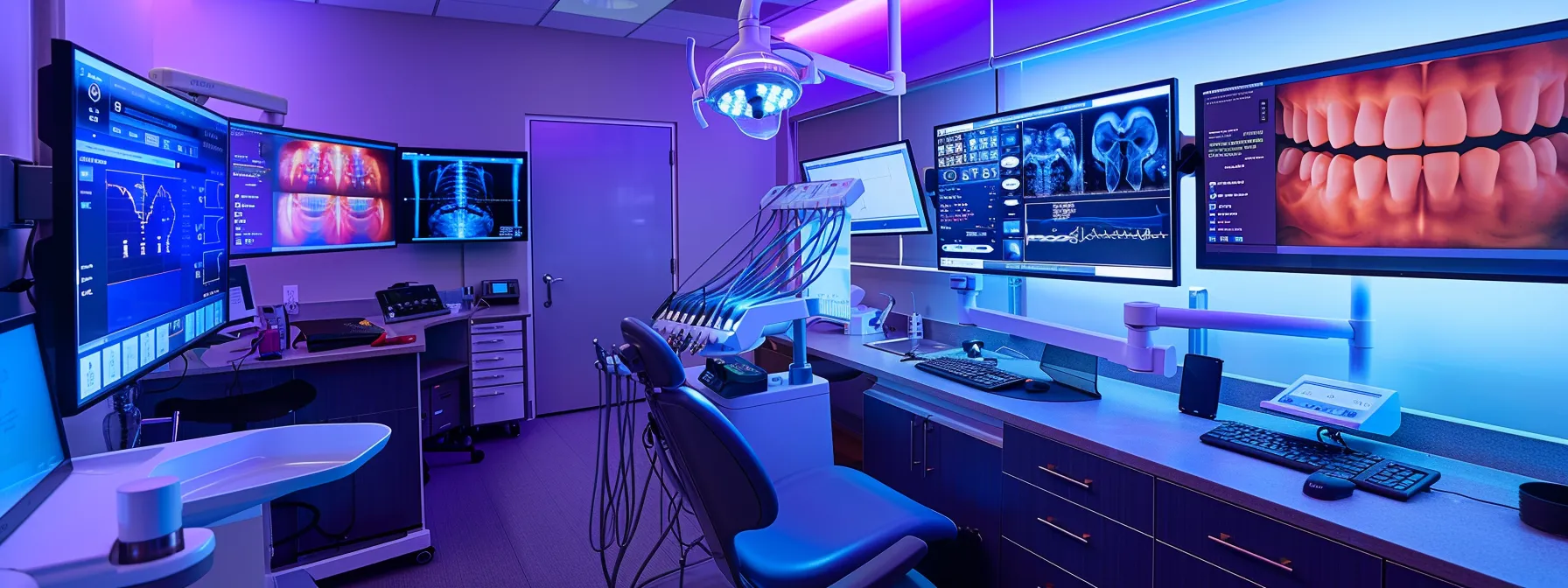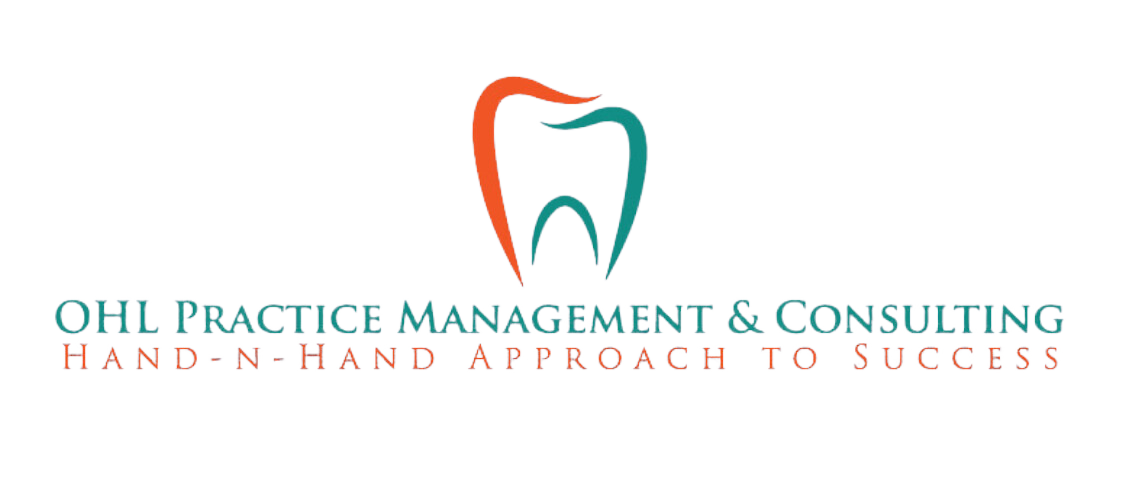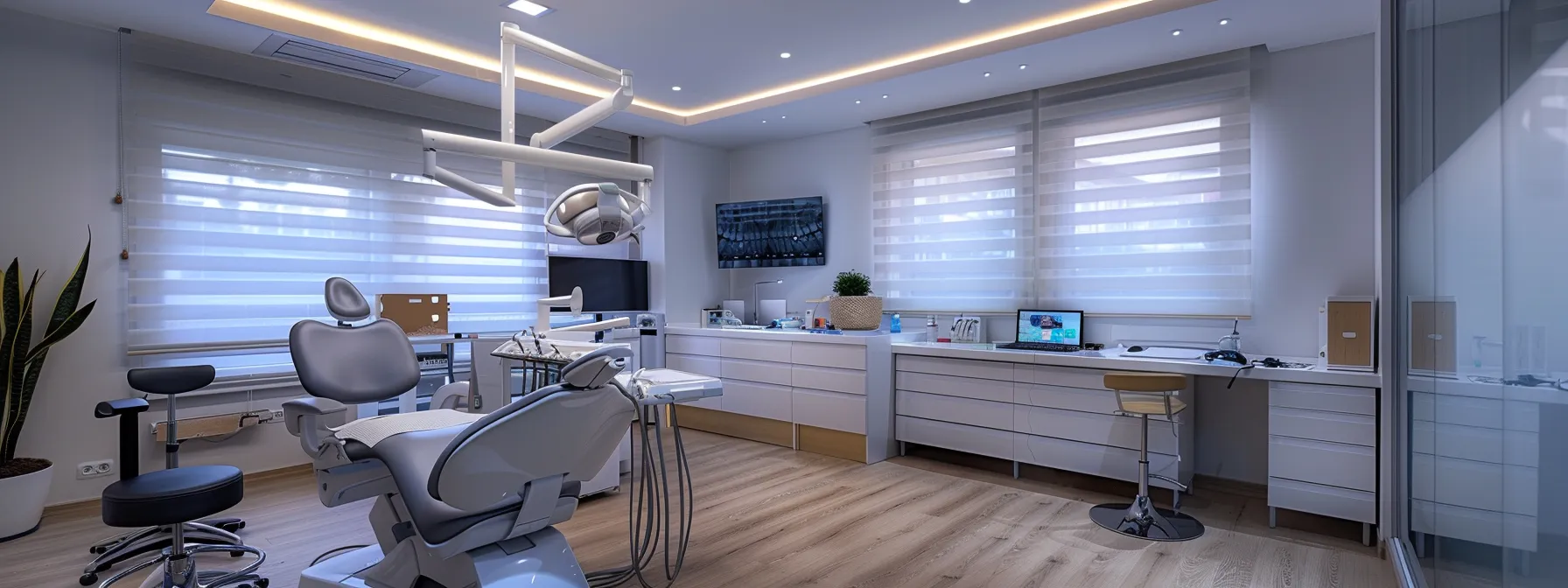How to Integrate Dental and Sleep Medicine Effectively
Many people don’t realize how closely dental health and sleep disorders are linked. Integrating dental and sleep medicine can significantly improve patient outcomes, yet many practices overlook this connection. This article will cover key strategies such as developing comprehensive treatment plans and educating patients on integrated care’s importance. By reading this, dental professionals will learn how to effectively collaborate with sleep specialists and enhance their practice’s accessibility, making it easier to address common issues like sleep apnea. This integration not only benefits patients but also boosts the overall performance of dental practices in today’s healthcare landscape.
Key Takeaways
- Collaboration between dental and sleep specialists improves patient health outcomes significantly
- Identifying overlapping conditions aids in tailored treatment strategies for patients
- Effective communication streamlines care and enhances patient experiences in both dental and sleep medicine
- Innovative dental devices support sleep medicine by addressing issues like sleep apnea and teeth grinding
- Proactive patient education fosters better health management and awareness of oral and sleep health connections
Understanding the Relationship Between Dental Health and Sleep Disorders

Common oral health issues often arise in connection with sleep disorders like snoring and sleep apnea. These disruptions not only impact sleep quality but can also lead to diseases affecting the mouth and jaw, including temporomandibular joint disorders. Understanding the significance of collaboration between dental and sleep specialists, reflecting the dental sleep medicine evolution, is essential for effective therapy, such as a 90-day sleep program, and improving overall health outcomes.
Exploring Common Oral Health Issues Linked to Sleep Apnea
Sleep apnea is often linked to various oral health issues, which can complicate practice management for dental professionals. Conditions like dry mouth and gum disease frequently arise due to disrupted breathing patterns during sleep, highlighting the need for collaboration between dentists and sleep specialists as part of dental sleep medicine evolution. By integrating dental care with sleep medicine, including a 90-day sleep program, dental assistants and practitioners can address these challenges, ultimately improving overall health care outcomes.
Identifying How Sleep Disruptions Affect Oral Health
Sleep disruptions can significantly impact oral health by affecting occlusion and leading to various complications. For instance, issues like teeth grinding or clenching often arise during sleep, resulting in discomfort and potential damage to teeth. A thorough questionnaire can help identify these problems, allowing primary care providers and dental professionals to collaborate effectively and integrate treatments, including clear aligners, cosmetic dentistry, and a 90-day sleep program, as part of the dental sleep medicine evolution, to enhance the patient’s well-being.
- Understanding how sleep affects oral health is crucial.
- Disruptions can lead to teeth grinding and clenching.
- Identifying symptoms through questionnaires helps pinpoint issues.
- Collaboration between primary care and dental professionals is key.
- Utilizing treatments like clear aligners can improve patient outcomes.
The Role of Temporomandibular Joint Disorders in Sleep Quality
Temporomandibular joint disorders (TMJ) can significantly damage sleep quality by causing discomfort and pain during rest. These issues often arise from teeth grinding or clenching, which can affect the tongue’s position and strain the surrounding tissues. By addressing TMJ through integrated orthodontics and dental sleep medicine evolution, practitioners can help patients improve their sleep with a 90-day sleep program while reducing discomfort and enhancing overall health.
Significance of Collaboration Between Dental and Sleep Specialists
Collaboration between dental and sleep specialists is crucial for effective treatment in dental sleep medicine, a field undergoing significant dental sleep medicine evolution. This teamwork not only fosters motivation among practitioners but also ensures comprehensive care for patients facing sleep disorders. By integrating general dentistry with sleep health, dental teams can identify issues earlier and offer solutions such as a 90-day sleep program that enhance overall well-being. When patients recognize this synergy, they are more inclined to request appointments and engage with their treatment plans.
Assessing the Integration of Dental and Sleep Medicine

Effective integration of dental and sleep medicine begins with evaluating current methods for interdisciplinary communication. Examining case studies of successful integrated practice models reveals positive outcomes for patients. It’s crucial to identify barriers to collaboration, including challenges in medical billing and knowledge gaps among professionals. Understanding the advantages of a unified approach enhances patient care, ensuring comprehensive treatment that addresses both dental and sleep health needs.
Evaluating Current Methods for Interdisciplinary Communication
Evaluating current methods for interdisciplinary communication is vital for successful integration of dental and sleep medicine. Many dental practices face challenges in sharing patient information effectively, which can increase risk factors for oral health issues when sleep disorders are not addressed. By fostering open lines of communication between dental care teams and sleep specialists, practices can enhance hygiene standards and streamline treatment plans, ultimately leading to better patient outcomes.
Examining Case Studies of Integrated Practice Models
Examining case studies of integrated practice models shows how strategic collaboration can significantly impact patient outcomes. For instance, practices that combine dental and sleep medicine frequently report improved success in addressing sleep apnea and related oral health issues. These models often release the burden off patients by ensuring a streamlined process where both dental and sleep specialists work together, making treatment more efficient and tailored to individual needs.
Identifying Barriers to Collaboration in Dental and Sleep Fields
Identifying barriers to collaboration in the dental and sleep fields is essential for successful integration. Common challenges include inadequate communication channels between practices and differing approaches to patient care, which can lead to missed opportunities for comprehensive treatment. By recognizing these barriers early, dental and sleep specialists can work together to develop effective strategies for seamless collaboration.
Advantages of a Unified Approach to Patient Care
A unified approach to patient care in the fields of dental and sleep medicine brings many benefits. This collaboration allows dental professionals and sleep specialists to create comprehensive treatment plans that address both oral health and sleep disorders, leading to improved health outcomes for patients. Patients often experience better symptom management and heightened satisfaction as they receive tailored care that concentrates on their unique needs:
- Holistic management of both oral and sleep health.
- Simplified care process through integrated referrals.
- Enhanced communication among healthcare professionals, fostering better patient relationships.
- Increased patient awareness of the connection between dental and sleep health.
Developing Comprehensive Treatment Plans

Identifying patient populations that benefit from integrated care is essential for effective treatment. Incorporating dental evaluations into sleep disorder assessments enables practitioners to customize treatment strategies for individuals with overlapping conditions. Monitoring outcomes and adjusting treatment protocols ensures ongoing improvement in patient care, making this approach both practical and valuable for enhancing overall health.
Identifying Patient Populations That Benefit From Integrated Care
Identifying patient populations that benefit from integrated dental and sleep medicine is a crucial step toward comprehensive treatment. Individuals experiencing sleep apnea or chronic snoring often face oral health challenges, such as gum disease or tooth grinding. By recognizing these connections, dental professionals can tailor their approaches, ensuring that patients receive the focused care they need while effectively addressing overlapping conditions for better overall health outcomes.
Incorporating Dental Evaluations Into Sleep Disorder Assessments
Integrating dental evaluations into sleep disorder assessments can dramatically enhance treatment effectiveness. When dentists conduct thorough assessments for patients experiencing sleep apnea, they can identify oral health issues such as gum disease or misaligned teeth that may aggravate sleep problems. This collaborative approach not only leads to tailored treatment plans but also fosters a deeper understanding of how oral and sleep health interact, ultimately improving overall patient outcomes.
Customizing Treatment Strategies for Individuals With Overlapping Conditions
Customizing treatment strategies for individuals with overlapping dental and sleep conditions is essential for achieving better health outcomes. By conducting thorough evaluations that consider both oral health and sleep disorders, practitioners can develop tailored plans that address specific issues like teeth grinding or misaligned jaws. This holistic approach enhances the effectiveness of treatments, ensuring patients receive care that meets their unique needs and improves their overall quality of life:
Monitoring Outcomes and Adjusting Treatment Protocols
Monitoring outcomes is a key part of integrating dental and sleep medicine. Practitioners should regularly assess how treatment protocols are working for their patients, especially for conditions like sleep apnea or TMJ disorders. By keeping track of symptoms and making adjustments based on feedback, dental teams can ensure that patients receive the best care tailored to their needs, helping improve their overall oral and sleep health.
Educating Patients on the Importance of Integrated Care

Creating informative materials about the connections between sleep and oral health is essential for patients’ understanding. Utilizing technology, like interactive apps or videos, can enhance engagement and make learning easier. Addressing common concerns and misconceptions directly helps clarify the importance of integrated care. Through education, patients are encouraged to take proactive steps in managing their health, ultimately leading to better outcomes.
Crafting Informative Materials on Sleep and Oral Health Connections
Creating informative materials that explain the connections between sleep and oral health is essential for patient education. By using simple language and engaging visuals, dental practices can effectively communicate how issues like sleep apnea can affect dental conditions, such as gum disease and teeth grinding. These resources empower patients to recognize the importance of integrated care, encouraging them to take proactive steps in managing both their sleep health and oral health.
Using Technology to Enhance Patient Understanding and Engagement
Utilizing technology can significantly boost patient understanding and engagement when it comes to integrating dental and sleep medicine. For example, interactive apps and educational videos can simplify complex concepts, helping patients see the direct links between oral health and sleep disorders. By making learning accessible and engaging, dental practices encourage patients to take an active role in managing their health, leading to better outcomes for both their sleep and dental needs.
Strategies for Addressing Patient Concerns and Misconceptions
Addressing patient concerns and misconceptions about the integration of dental and sleep medicine is key to fostering better understanding and compliance. For example, dental professionals can reassure patients that treating their sleep disorders, like sleep apnea, will not only improve their sleep but also enhance their oral health, reducing issues such as teeth grinding. By providing clear explanations and examples, practitioners can create a supportive environment where patients feel comfortable discussing their health needs and the benefits of integrated care.
Encouraging Proactive Health Management Through Education
Encouraging proactive health management through education is key to helping patients understand the vital connections between dental and sleep medicine. Dental professionals can provide valuable information on how oral health affects sleep disorders or how sleep quality impacts oral conditions. By fostering open discussions and offering practical resources, patients are motivated to take charge of their health, leading to better management of both their sleep and dental issues:
- Provide simple educational materials that explain connections between oral health and sleep quality.
- Offer practical tools and resources to help patients track their symptoms and progress.
- Encourage patients to communicate openly about their health concerns during visits.
Implementing Effective Referral Systems

Designing streamlined referral processes between dental and sleep practices ensures patients receive timely and coordinated care. Developing clear criteria for referrals enhances the efficiency of this system, while measuring efficacy helps track improvements in patient outcomes. Encouraging feedback loops for continuous improvement creates a responsive care environment, ultimately benefiting both patients and practitioners alike.
Designing Streamlined Referral Processes Between Dental and Sleep Practices
Creating streamlined referral processes between dental and sleep practices is essential for providing timely care. Ensuring that both teams have clear communication channels can make the transition smoother for patients experiencing issues like sleep apnea or TMJ disorders. By developing specific criteria for referrals, dental professionals can quickly identify when a patient might benefit from collaboration with a sleep specialist, leading to improved overall health outcomes.
Developing Criteria for Streamlined Patient Referrals
Developing criteria for streamlined patient referrals is an essential step in integrating dental and sleep medicine effectively. Identifying specific symptoms, such as signs of sleep apnea or issues like teeth grinding, allows dental professionals to determine when a referral to a sleep specialist is necessary. By establishing clear guidelines, practices can enhance communication and ensure that patients receive timely assessments and tailored treatments, ultimately improving health outcomes and overall patient satisfaction.
Measuring the Efficacy of Referral Systems on Patient Outcomes
Measuring the efficacy of referral systems in dental and sleep medicine is essential for improving patient outcomes. By tracking patient progress after referrals, healthcare providers can identify which practices lead to better management of conditions like sleep apnea and TMJ disorders. This data-driven approach helps practitioners refine their referral processes, ensuring that patients receive timely interventions that enhance their overall health and well-being.
Encouraging Feedback Loops for Continuous Improvement
Encouraging feedback loops between dental and sleep medicine practices is essential for continuous improvement in patient care. Regularly gathering insights from both patients and practitioners can highlight what’s working well and where there’s room for growth. This collaborative approach helps refine referral processes and enhances communication, ultimately leading to more tailored treatment plans for issues like sleep apnea and TMJ disorders.
Leveraging Technology to Support Integration

Utilizing technology effectively is a game-changer in integrating dental and sleep medicine. Electronic Health Records facilitate interdisciplinary sharing, allowing seamless communication. Telehealth solutions enable remote consultations, ensuring better accessibility for patients. Additionally, innovative tools for patient data collection streamline follow-ups, while advancements in dental devices enhance sleep medicine practices. Each of these elements plays a crucial role in improving patient care.
Utilizing Electronic Health Records for Interdisciplinary Sharing
Utilizing Electronic Health Records (EHR) effectively can streamline collaboration between dental and sleep medicine professionals. By ensuring that patient information is easily accessible and shared in real-time, EHRs facilitate quicker decision-making and coordinated care, which is vital for managing overlapping conditions like sleep apnea and teeth grinding. Practices that harness the power of EHR can significantly reduce gaps in treatment and enhance the overall patient experience:
- EHRs enable real-time access to patient information.
- Improved coordination leads to timely interventions.
- Streamlined communication enhances patient outcomes.
Exploring Telehealth Solutions for Remote Consultations
Telehealth solutions are transforming the way dental and sleep medicine practices connect with patients. By enabling remote consultations, practitioners can assess and manage conditions like sleep apnea from the comfort of patients’ homes, offering convenience and flexibility. This approach not only enhances accessibility but also helps streamline communication between dental and sleep specialists, ensuring timely care for individuals facing overlapping health challenges:
Assessing Tools for Patient Data Collection and Follow-Up
Assessing tools for patient data collection and follow-up is key in integrating dental and sleep medicine. By utilizing digital forms and health apps, practices can capture essential information about patients’ sleep habits and oral health more efficiently. These tools not only streamline data collection but also facilitate timely follow-ups, ensuring that both dental and sleep issues are addressed promptly while keeping the care team well-informed of patients’ progress.
Innovations in Dental Devices Aiding Sleep Medicine Practices
Innovations in dental devices are making a significant impact on sleep medicine practices by offering effective solutions for conditions like sleep apnea and teeth grinding. For example, oral appliances designed to reposition the jaw can enhance airflow during sleep, reducing the severity of sleep-related breathing disorders. These advancements not only improve patient comfort but also streamline the collaboration between dental and sleep specialists, allowing for a more integrated approach to treatment.
Conclusion
Integrating dental and sleep medicine is vital for enhancing patient care and addressing overlapping health challenges. Effective collaboration between dental and sleep specialists leads to improved treatment outcomes and overall health benefits. By recognizing the connections between oral health and sleep disorders, practitioners can develop comprehensive care plans that prioritize patient needs. This synergy not only boosts patient satisfaction but also empowers individuals to take proactive steps in managing their health.
Take Your Practice to the Next Level with Ohl Consulting
Expanding your dental practice with sleep medicine can feel overwhelming—but it doesn’t have to be. At Ohl Consulting, we provide expert guidance and hands-on support to make the transition smooth, profitable, and stress-free. Our tailored approach ensures you and your team have everything you need to implement sleep medicine with confidence.
Here’s how we help: in-office team training
- Customized Integration Plans: Tailored strategies to fit your practice’s unique needs.
- Staff Training & Education: Empower your team with the skills to succeed.
- Medical Billing Support: Navigate insurance and maximize reimbursements.
- Marketing Assistance: Reach the right patients and grow your sleep practice.
- Ongoing Mentorship: Continuous support as your program expands.
Don’t let uncertainty hold you back. Schedule a consultation today and start building a thriving dental sleep practice with Ohl Consulting!





